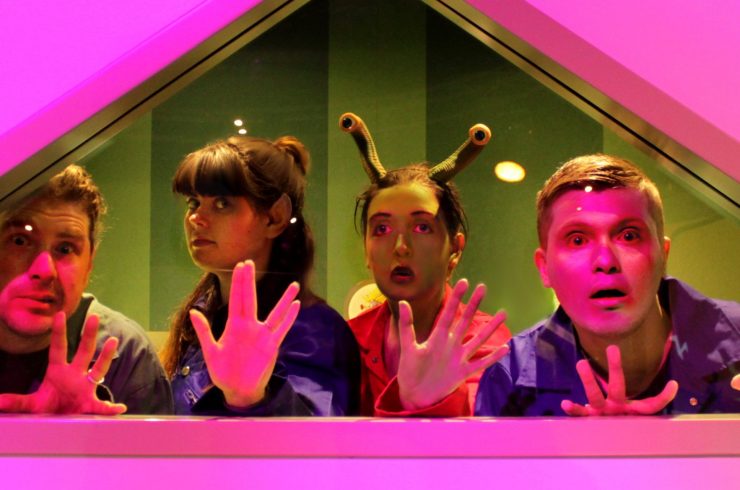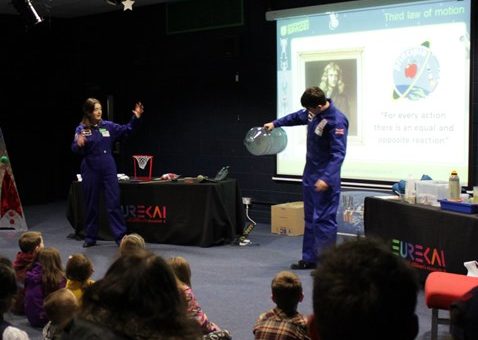Science fiction for me is more than just having spaceships or lightsabers in a story. It can inspire people to not only be interested in science, but also to recreate the inventions on the page or on the screen in real life. There are countless examples of objects or concepts appearing in science fiction before they appeared in our everyday lives. The communicators from Star Trek are a perfect example.

A Star Trek communicator!
In the 1960s when Star Trek first aired, having a device you could hold in your hand that would let you talk to somebody on the other end was pure science fiction, but less than 10 years later this was a reality. Directly inspired by watching Captain James T. Kirk using his communicator, a Motorola engineer named Martin Cooper created the first prototype mobile phone in 1973. Over the last 40 years this has transformed into the truly world changing smartphone that a lot of us now carry in our pocket.
The inspiration comes in slightly other ways as well. At the start of the 1900s a popular book series for young adults featured Tom Swift and his inventions. Among the many things he invented that predicted real world inventions, Tom Swift created an ‘electric rifle’. Inspired by this, the electric shock stun gun was created, the TASER and is even named after the hero of the books, Thomas A Swift’s Electric Rifle.
Beyond inspiring real world inventions science fiction also serves another purpose. By creating fictional worlds, the creators can explore our world and culture in different ways. This can be through near-future settings, like Phillip K. Dick and his many novels. The most famous was the basis for the film Blade Runner, which used androids that looked like humans to think about what it meant to be human. Star Trek looked into the far future, hundreds of years from now, to see what humanity could become. They also used this future setting to do some controversial things at the time, with a black woman serving on the bridge of the Enterprise, unheard of in 1960s America. Or the alternative to the optimism of Star Trek is the world of 1984 by George Orwell (which also predicted a lot our modern world), or examining contemporary fears such as the original Japanese Godzilla films created as a response to the nuclear fear in Japan after WW2! These are just a few examples as there are many writers creating their own little worlds to help us reflect back on our own.
For me, apart from using it to examine ourselves and our culture, and providing inspirations for new technology, science fiction is really cool! Good versus evil in a lightsaber battle, spaceships flying into the unknown to see what they discover or robots taking over the world is just a lot of fun.
We’re going to be exploring the crossover between science fiction and science fact at Eureka! this Feb half term at an event we’re (cleverly) calling Space Trek. Whether you live with a mini sci-fi geek or a science buff, we’d love you to join our crew.





